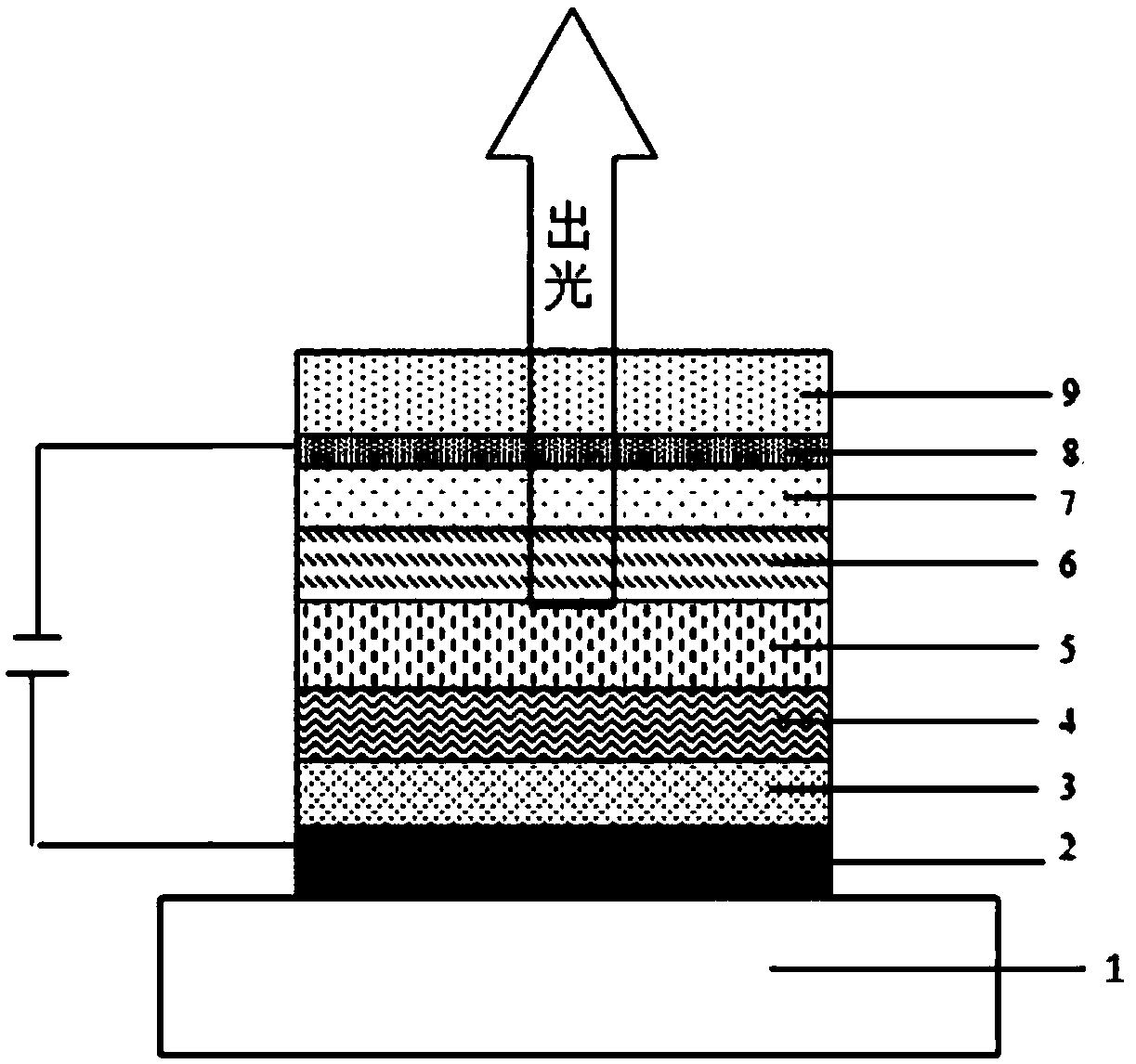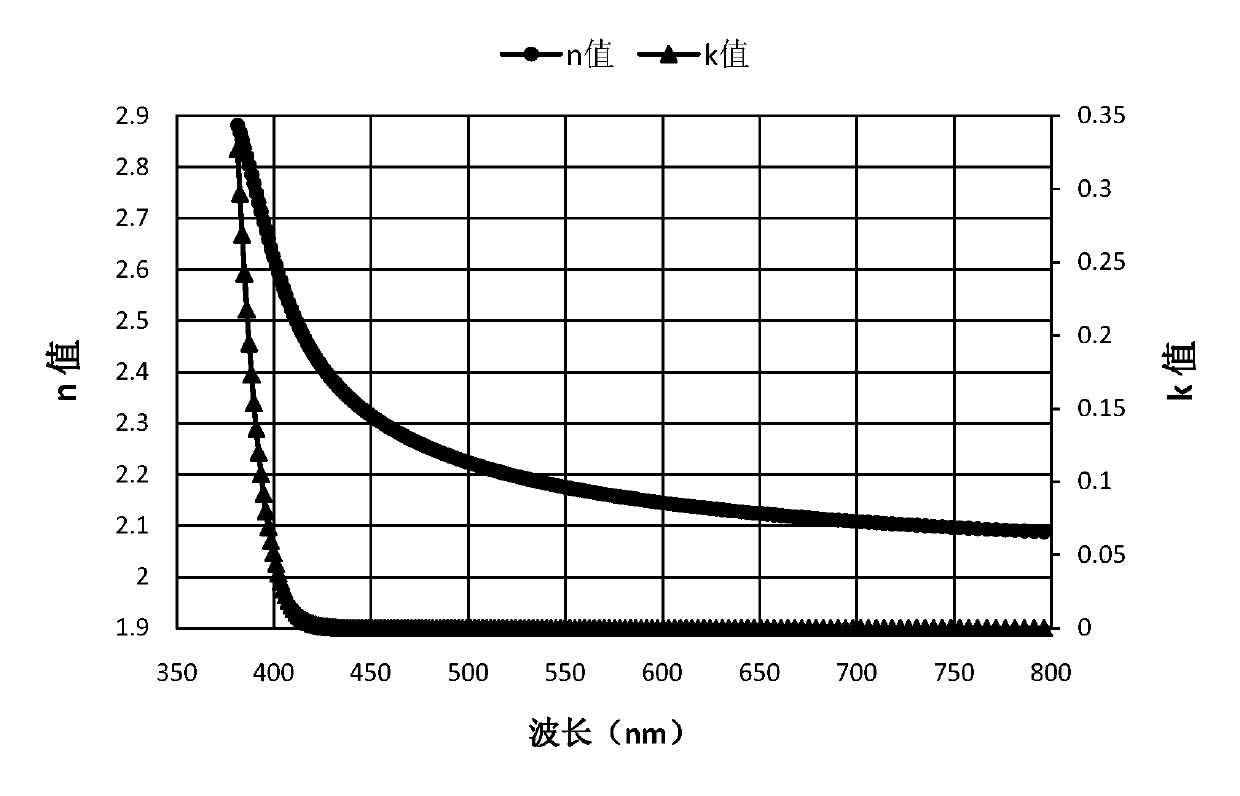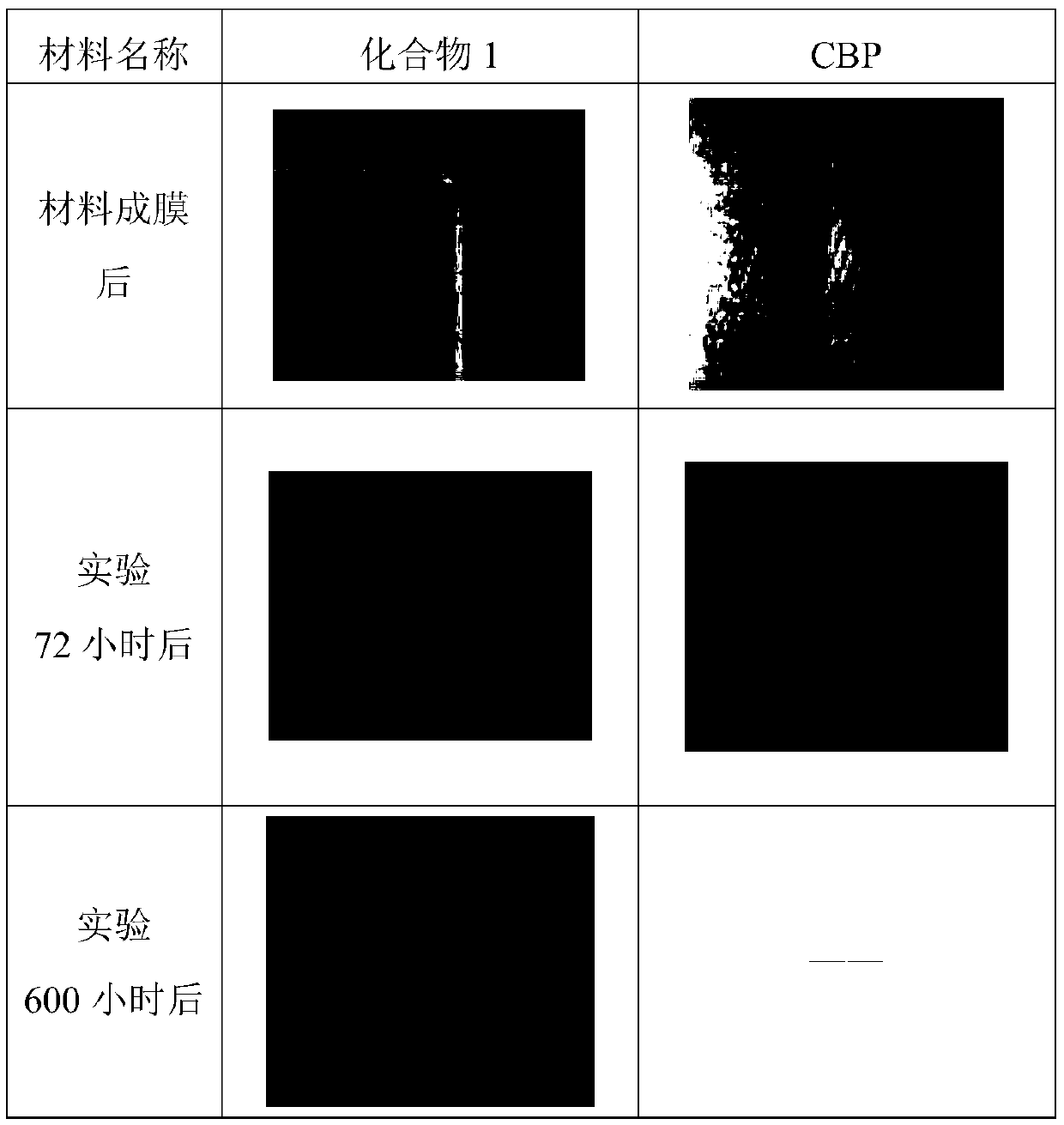Organic compound based on triazine and anthrone structure, and applications thereof
An organic compound and anthrone technology, applied to organic electroluminescent devices, in the field of organic compounds based on triazine and anthrone structures, can solve the problems that affect the OLED radiation spectrum angle distribution, complex manufacturing process, etc.
- Summary
- Abstract
- Description
- Claims
- Application Information
AI Technical Summary
Problems solved by technology
Method used
Image
Examples
Embodiment 1
[0110] Embodiment 1: the synthesis of intermediate A
[0111] When Ar 1 is not a single bond; or Ar1 is a single bond, R 1 When connecting with the mother nucleus triazine as C-C:
[0112]
[0113] (1) Under a nitrogen atmosphere, weigh the raw material I and dissolve it in tetrahydrofuran (THF), then add bis(pinacolyl)diboron, (1,1'-bis(diphenylphosphino)ferrocene)dichloro Palladium (II) and potassium acetate are added, the mixture is stirred, and the mixed solution of the above reactants is heated to reflux at a reaction temperature of 70-90°C for 5-10 hours; dry. Separating and purifying the obtained residue through a silica gel column to obtain intermediate E; the molar ratio of the raw material I to bis(pinacol radical) diboron is 1:1.0~3, Pd(dppf) 2 Cl 2 The molar ratio to raw material I is 0.001-0.04:1, the molar ratio of potassium acetate to raw material I is 1.0-4.0:1, and the ratio of raw material I to THF is 1g:10-30ml.
[0114] (2) Under a nitrogen atmosph...
Embodiment 2
[0154] Embodiment 2: the synthesis of compound 1
[0155]
[0156] In a 250mL three-necked flask, blow nitrogen, add 0.01mol of intermediate A1, 150ml of DMF (N,N-dimethylformamide), 0.03mol of raw material B1, 0.0002mol of palladium acetate, stir, and then add 0.04mol of K 3 PO 4 Aqueous solution, heated to 150°C, refluxed for 24 hours, sampled and plated, the reaction was complete; naturally cooled to room temperature, extracted with 200mL dichloromethane and 200mL water, separated, took the organic phase and dried it with anhydrous sodium sulfate, filtered, and the filtrate Rotary evaporation and silica gel column purification gave the target product with a HPLC purity of 99.1% and a yield of 56.3%.
[0157] Elemental analysis structure (molecular formula C 53 h 31 N 3 o 4 ): theoretical value C, 82.26; H, 4.04; N, 5.43; 0, 8.27; test value: C, 82.27; ESI-MS(m / z)(M + ): The theoretical value is 773.23, and the measured value is 773.34.
Embodiment 3
[0158] Embodiment 3: the synthesis of compound 2
[0159]
[0160] The preparation method of compound 2 is the same as that of Example 2, except that intermediate A1 is replaced by intermediate A2. Elemental analysis structure (molecular formula C 53 h 31 N 3 o 4 ): theoretical value C, 82.26; H, 4.04; N, 5.43; 0, 8.27; test value: C, 82.24; ESI-MS(m / z)(M + ): The theoretical value is 773.23, and the measured value is 773.32.
PUM
 Login to View More
Login to View More Abstract
Description
Claims
Application Information
 Login to View More
Login to View More - R&D
- Intellectual Property
- Life Sciences
- Materials
- Tech Scout
- Unparalleled Data Quality
- Higher Quality Content
- 60% Fewer Hallucinations
Browse by: Latest US Patents, China's latest patents, Technical Efficacy Thesaurus, Application Domain, Technology Topic, Popular Technical Reports.
© 2025 PatSnap. All rights reserved.Legal|Privacy policy|Modern Slavery Act Transparency Statement|Sitemap|About US| Contact US: help@patsnap.com



